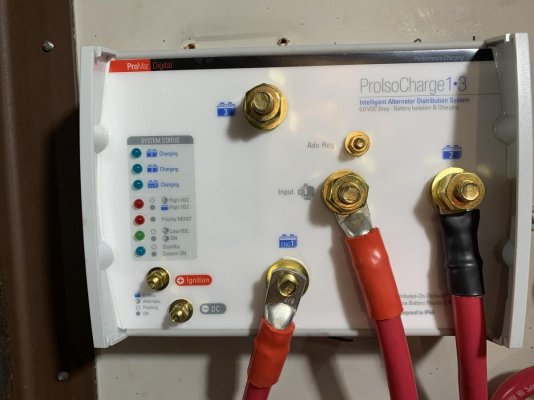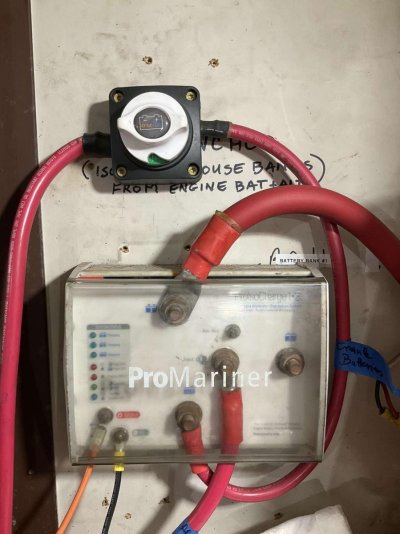And last but not least you do not need to be running the boat to do some voltage and amperage testing. JUst run the engine at the dock and use a Voltmeter and a clamp on DC ammeter. I emphasize the DC as there are a lot of AC only ammeters which are of no use for this. They MUST be able to read DC and ideally True Sine Wave.
Great info, thank you.
A little background. This alternator was installed by a mechanic, when the previous one died. It was the same brand, but 120A. I don’t think the pulley or the belts were changed. It just fit in.
I did not know much about it, so I just trusted the mechanic. He did the replacement completely. I really don’t know when this alternator stopped charging properly.
In the past, I started my main engine directly, without my generator. Not only it sucked down the cranks batteries, but also I could hear wheeling sound, which would go away after few minutes. Sounded like the old cars with worn belts. I have learned, if I start my generator first,this sound would not happen. I suspect the alternator was not overloaded, since the generator provided the power and charged the batteries. So, this was my method to start the main engine and the wheeling sound did not occur anymore.
After I started this thread, my generator was down and I fixed it just yesterday. Today, I did the first measurements on the alternator, following the diagram I’ve posted earlier.
There was no charge from the alternator.
The starting voltage of the crank batteries was 12.8V. After I started the generator, ( shorepower disconnected ) the main engine started, but it took several tries. This is always the case when the engine is not used for a month or so. I am on shorepower most of the time, as I do many projects simultaneously. With the main engine running, the voltmeter in the PH showed a bit above 12V. As I was disconnected from shorepower, I shut down the generator and the voltmeter gauge slowly went into yellow. I went to the engine and measured the batteries. It was 12.45V. I measured the alternator output, but nothing was coming out. This was at 700 rpm on the main. The guide suggests to move the rpm up to 1500, which I did. Still no charge was coming from the alternator.
I run my engine underway between 1500-1600 rpm. This is my cruising speed of 6-7 knots. CAT3306. When the alternator was new, I remember seeing the voltmeter gauge in the green with a healthy voltage.
I also used a digital amp meter on the wires, but nothing was measured. When the generator runs, I can see 14A on the wires.
So, it must be the regulator on the alternator. I am happy to learn that the regulator is easy to remove on these models. The question now is, what shall I replace or remove? Do I just take off the regulator and try to replace it with a new one? Or do I have to remove the alternator completely and take it apart, or take it to a repair shop? Or just get a compatible external regulator in combine it with the alternator?
I do plan to get a better gauge for the pilot house, preferably digital. Balmar solution includes digital display at the regulator for an extra charge. They also sell a remote display, which can be put in the PH. it would be nice to have, but the price is pretty high. Just a simple regulator replacement solution would be cheaper, but less informative for observation during troubleshooting.


